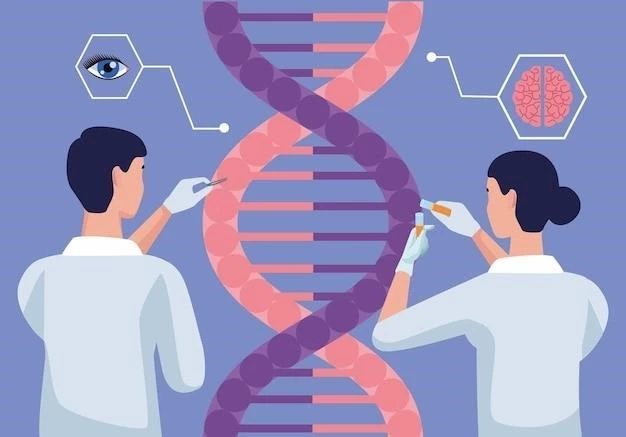Introduction to Progressive Diaphyseal Dysplasia
Progressive diaphyseal dysplasia, also known as Camurati-Engelmann disease, is a rare genetic disorder affecting bone density and skeletal structure. It is characterized by symmetrical cortical thickening in the long bones and can lead to various musculoskeletal impairments.
Progressive diaphyseal dysplasia, also known as Camurati-Engelmann disease, is a rare genetic disorder that affects bone density and skeletal structure. It is characterized by symmetrical cortical thickening in the long bones, leading to various musculoskeletal impairments. The disease is autosomal dominant and is caused by mutations in the TGFβ1 gene, resulting in skeletal abnormalities that can impact physical function and quality of life. Management typically involves a multidisciplinary approach to address the skeletal manifestations and optimize patient outcomes.
Clinical Manifestations of Progressive Diaphyseal Dysplasia
Characterized by limb pain, muscle weakness, and easy fatigability, progressive diaphyseal dysplasia can lead to gait disturbances and decreased muscle mass, particularly in the lower limbs.
Definition and Overview
Progressive diaphyseal dysplasia, also known as Camurati-Engelmann disease, is a rare autosomal dominant skeletal disorder characterized by bone abnormalities, particularly in the long bones and skull. Patients typically experience bone pain, muscle weakness, and gait disturbances due to the thickening of the bones, impacting both physical and functional aspects of their lives.
Symptoms and Presentation
Patients with progressive diaphyseal dysplasia commonly present with symptoms such as limb pain, muscle weakness, easy fatigability, and gait disturbances. The disease manifests with symmetrical thickening of the long bones, particularly in the diaphyses, leading to physical limitations and decreased muscle mass, predominantly affecting the lower limbs. Clinical assessment often includes evaluating bone pain, muscle function, and mobility to guide diagnosis and management strategies.
Genetic Basis of Progressive Diaphyseal Dysplasia
Progressive diaphyseal dysplasia, also known as Camurati-Engelmann disease, is a rare genetic disorder caused by mutations in the TGFβ1 gene. This results in skeletal abnormalities affecting bone density and structure.
Autosomal Dominant Inheritance
Progressive diaphyseal dysplasia, or Camurati-Engelmann disease, follows an autosomal dominant inheritance pattern. This means that a single copy of the mutated gene from one parent is enough to cause the condition in an individual. Mutations in the TGFβ1 gene play a crucial role in the development of this rare skeletal disorder.
Role of Mutations in TGFβ1 Gene
Mutations in the TGFβ1 gene play a crucial role in the development of progressive diaphyseal dysplasia. These mutations lead to skeletal abnormalities affecting bone density and structure, contributing to the characteristic symptoms and presentations of the disease. Understanding the impact of these genetic mutations is essential for diagnosing and managing individuals with this rare skeletal disorder.

Epidemiology and Prevalence of Progressive Diaphyseal Dysplasia
The rare genetic disorder known as Camurati-Engelmann disease, or progressive diaphyseal dysplasia, affects all races and is inherited as an autosomal dominant trait with variable penetrance, impacting bone density and structure. The prevalence of this condition is low, adding to its rarity in the population.
Incidence and Distribution
Progressive diaphyseal dysplasia, known as Camurati-Engelmann disease, is a rare autosomal dominant genetic disorder that affects individuals across different racial backgrounds. The condition is characterized by bone density abnormalities and structural changes in the long bones, particularly the diaphyses. Its prevalence is low, reflecting its rarity and variable penetrance in the population.
Demographics and Ethnicity
Progressive diaphyseal dysplasia, or Camurati-Engelmann disease, affects individuals of various ethnic backgrounds as it is inherited in an autosomal dominant manner. The demographic distribution of this rare genetic disorder demonstrates variability across different populations, highlighting the importance of understanding its prevalence and impact on diverse ethnic groups.
Pathophysiology of Progressive Diaphyseal Dysplasia
Progressive diaphyseal dysplasia involves abnormalities in bone metabolism, particularly affecting the density and structure of long bones and the skull. These changes can lead to skeletal manifestations impacting physical function.
Bone Metabolism and Sclerosis
Progressive diaphyseal dysplasia, also known as Camurati-Engelmann disease, is characterized by abnormalities in bone metabolism leading to bone sclerosis. This condition results in the thickening of long bones and the skull due to increased bone density, impacting skeletal structure and function.
Involvement of Long Bones and Skull
Progressive diaphyseal dysplasia, or Camurati-Engelmann disease, primarily affects the long bones’ diaphyses and the skull. This rare autosomal dominant sclerosing bone dysplasia leads to bone pain, muscle weakness, and gait disturbances due to the thickening of bones in these specific areas, impacting physical function and mobility.
Clinical Management and Treatment of Progressive Diaphyseal Dysplasia
A multidisciplinary approach is essential in managing progressive diaphyseal dysplasia. Current therapeutic strategies focus on relieving symptoms, maintaining mobility, and optimizing quality of life for individuals with this rare genetic disorder.
Multidisciplinary Approach
The management of progressive diaphyseal dysplasia necessitates a collaborative effort involving healthcare professionals from various specialties. This multidisciplinary approach aims to address the diverse symptoms and complications associated with the disease, thereby enhancing the quality of care and life for affected individuals.
Current Therapeutic Strategies
The management of progressive diaphyseal dysplasia involves a combination of therapeutic strategies aimed at alleviating symptoms, preserving mobility, and improving the overall quality of life for individuals affected by this rare genetic disorder. Current approaches focus on addressing the skeletal manifestations and optimizing patient outcomes through a customized treatment plan tailored to each individual’s specific needs and challenges.
Prognosis and Complications Associated with Progressive Diaphyseal Dysplasia
Potential long-term effects of progressive diaphyseal dysplasia include musculoskeletal impairments that can impact a person’s quality of life. Understanding the prognosis and complications associated with this rare genetic disorder is crucial for comprehensive patient care and management.
Potential Long-Term Effects
Progressive diaphyseal dysplasia can result in musculoskeletal impairments that may impact an individual’s quality of life. Understanding the long-term effects and potential complications associated with this rare genetic disorder is crucial for effective management and care.
Risk of Musculoskeletal Impairments
Individuals with progressive diaphyseal dysplasia face the risk of developing musculoskeletal impairments that can significantly impact their quality of life. Understanding and addressing these potential complications are essential in the comprehensive management of this rare genetic disorder.

Research Advances and Future Directions in Progressive Diaphyseal Dysplasia
Current studies and clinical trials focus on advancing therapeutic interventions and exploring emerging therapies and innovations for the management of progressive diaphyseal dysplasia. These research efforts aim to enhance patient care and improve treatment outcomes for individuals affected by this rare genetic disorder.
Current Studies and Clinical Trials
Ongoing research studies and clinical trials are dedicated to advancing the understanding and management of progressive diaphyseal dysplasia. These investigations aim to explore innovative therapeutic approaches and potential interventions to optimize patient care outcomes and enhance the quality of life for individuals affected by this rare genetic disorder.
Emerging Therapies and Innovations
Research in the field of progressive diaphyseal dysplasia is exploring novel therapeutic approaches and innovative interventions to enhance patient care outcomes. These emerging therapies aim to address the complex skeletal manifestations and improve the overall management of individuals with this rare genetic disorder.
